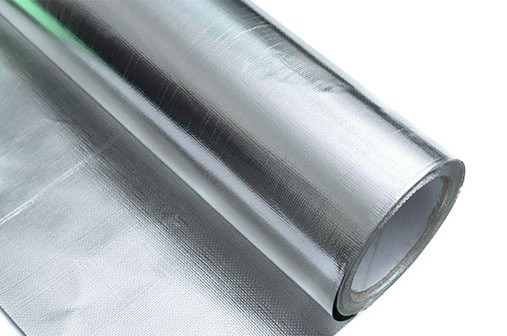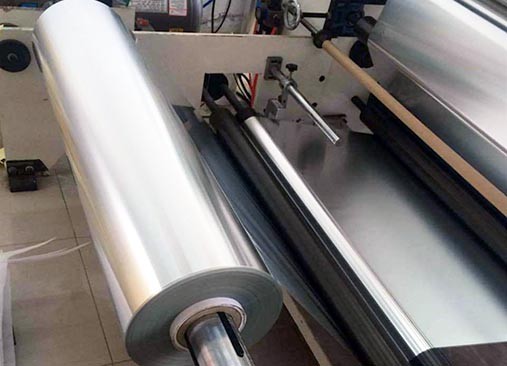- What is hydrophilic aluminium?
- Hydrophilic aluminum foil properties
- Advantages of Hydrophilic Aluminum Foil
- Specification of hydrophilic aluminum foil
- Hydrophilic Aluminum Foil Alloy Selection
- Color Options for Hydrophilic Aluminum Foil Coatings
- Characteristics of Hydrophilic Aluminum Foil
- Mechanical Properties of Hydrophilic Aluminum Foil Alloys
- Applications of Hydrophilic Aluminum Foil
- Hydrophilic Foil Coating Performance
- Production Process of Hydrophilic Aluminum Foil
- Structure of hydrophilic aluminum foil
- Hydrophilic aluminum foil storage
What is hydrophilic aluminium?
Hydrophilic aluminum refers to aluminum that has been specially treated or coated to exhibit hydrophilic properties. Hydrophilic aluminum has a strong affinity for water, making water or water-based liquids spread more easily and adhere to the surface.
Hydrophilic aluminum foil is ordinary aluminum foil subjected to hydrophilic treatment, coated with anti-corrosion and hydrophilic layers, and dried in a drying oven through special processes.
This characteristic of hydrophilic aluminum foil is particularly useful in applications requiring efficient heat transfer or humidity management, such as air conditioner heat exchangers, refrigerators, or other cooling equipment. The hydrophilic coating on the aluminum surface helps improve heat exchange efficiency, promoting uniform distribution of condensate or water across the surface area, thereby enhancing overall performance.

Hydrophilic aluminum foil can extend the service life of air conditioners. With a service life of 5-10 years, it is the main raw material for heat exchange fins in household air conditioners.
Hydrophilic aluminum foil properties
The surface of hydrophilic aluminum foil is highly hydrophilic. Hydrophilicity is determined by the angle formed by water adhering to the surface of the aluminum foil. The smaller the angle a is, the better the hydrophilic property is; conversely, the worse the hydrophilic property is. Generally speaking, angle a is less than 35°.
Hydrophilic property: Its main function is to make the moisture in the hot air condense into water droplets on the heat exchange fins to easily spread and flow down the sheet. This can avoid "bridging" of water droplets between the heat exchange fins and affect the ventilation effect of the heat exchanger, thus improving the heat exchange rate of the air conditioner and saving electricity bills with the same cooling capacity.
The commonly used hydrophilic aluminum foil currently on the market not only has good hydrophilicity on the surface, but also has high corrosion resistance, making the performance of air conditioners more optimized.
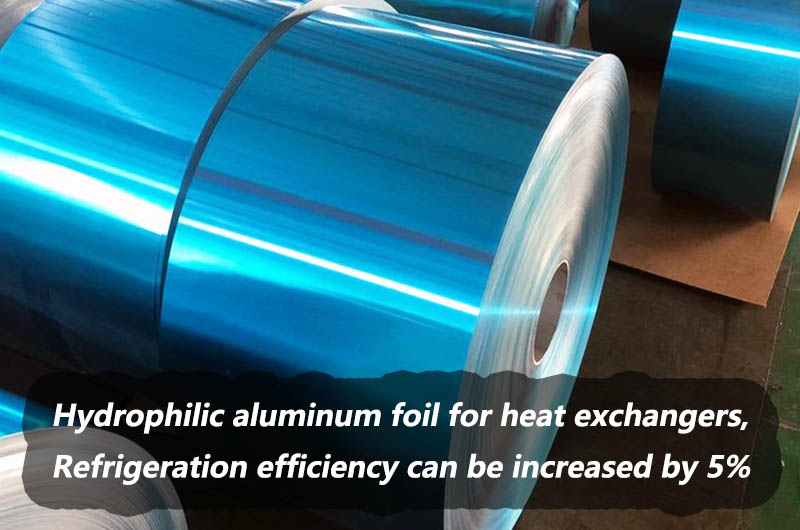
Advantages of Hydrophilic Aluminum Foil
Hydrophilic foil is the main raw material for heat exchange sheets in air conditioners. It is widely used in refrigeration equipment such as household air conditioners, refrigerators, and automobile air conditioners. Compared with ordinary light foil, it has the following advantages:
- Improved Heat Exchange Efficiency: The air flow resistance is small, and the heat exchange rate can generally be increased by 10%-15%.
- Increased Refrigerating Efficiency: The use of hydrophilic aluminum foil in heat exchangers can lead to a significant increase in refrigerating efficiency, potentially up to 5%.
- Corrosion Resistance: Hydrophilic aluminum foil exhibits corrosion resistance, making it durable and suitable for applications where exposure to moisture is common.
- Mildew Resistance: The material's resistance to mildew growth ensures a longer lifespan, especially in environments with high humidity levels.
- Odor-Free Properties: Hydrophilic aluminum foil does not produce unpleasant odors, making it suitable for applications where maintaining a clean and odor-free environment is important.
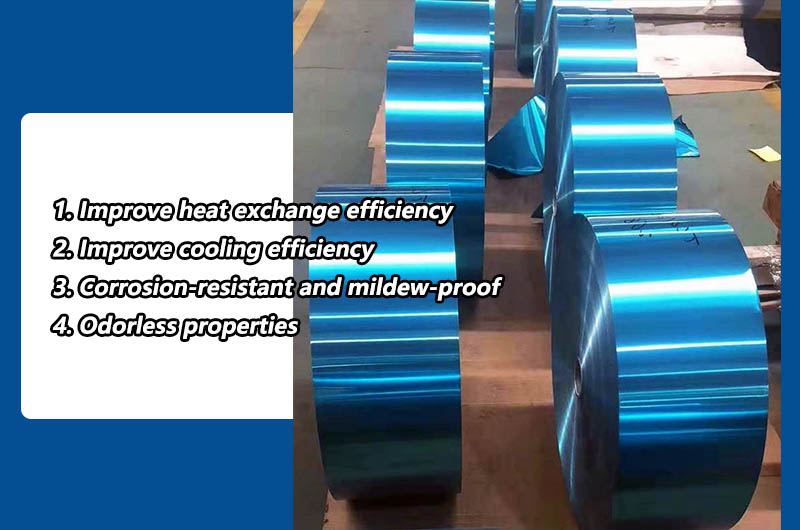
Specification of hydrophilic aluminum foil
| Alloy | 1100, 1200, 1030, 3003, 3102, 8006, 8011, 8021 |
| Temper | O H22 H24 H26 |
| Width | 60mm-1440mm |
| Thickness | 0.006-0.3mm |
| Coil inner diameter | 76mm, 152mm, out coil diameter according to the customer requirement |
| Color | Pure, Blue, Gold, Black, White |
| Specification | ASTM B479 ASTM B117 JIS H4160 DIN1784 The hydrophilic aluminum foil used for air conditioners should comply with YS/T95.2-2001. |
Hydrophilic Aluminum Foil Alloy Selection
- 8011 H16 hydrophilic aluminum foil: High-quality hydrophilic aluminum foil with excellent corrosion resistance, suitable for air conditioner heat exchanger fins.
- 1100/1200 O H11 hydrophilic aluminum foil: Soft hydrophilic aluminum foil designed for heat exchangers, featuring excellent formability and corrosion resistance.
- 1030B H22 hydrophilic aluminum foil: Hydrophilic aluminum foil with moderate strength and good corrosion resistance, commonly used for air conditioner fins.
- 3102 H24 hydrophilic aluminum foil: Hydrophilic aluminum alloy foil with high formability and corrosion resistance, ideal for heat transfer applications.
- 8006 H26 hydrophilic aluminum foil: Hydrophilic aluminum foil with enhanced strength and durability, suitable for manufacturing air conditioner heat exchanger fins.
- 3003 hydrophilic aluminum foil: General-purpose hydrophilic aluminum foil with good corrosion resistance and heat transfer properties, widely used in various heat exchange applications.
Color Options for Hydrophilic Aluminum Foil Coatings
Ordinary hydrophilic Aluminum Foil: Standard aluminum foil treated with coatings to enhance hydrophilicity, typically natural silver-gray in color.
Gold hydrophilic Aluminum Foil: Aluminum foil with a gold-colored coating, offering both hydrophilic properties and aesthetic appeal.
Blue hydrophilic Aluminum Foil: Aluminum foil coated with a blue layer, providing enhanced hydrophilicity, suitable for differentiation or aesthetic purposes in applications like air conditioner heat exchangers.
Characteristics of Hydrophilic Aluminum Foil
1. Excellent hydrophilicity and corrosion resistance.
2. Good formability without mold wear.
3. Strong resistance to impact, oils, solvents, and heat.
4. Low air resistance, typically increasing heat exchange efficiency by 10%-15%.
Mechanical Properties of Hydrophilic Aluminum Foil Alloys
| Alloy | Temper | Indoor Mechanical Property | ||
| Tensile Strength | Elongation (%) | Cupping Test Value | ||
| 1100, 8011, 3102, 1030B | O | 80~100 | ≥20 | ≥6.0 |
| H22 | 100~135 | ≥16 | ≥5.5 | |
| H24 | 115~145 | ≥12 | ≥5.0 | |
| H26 | 125~160 | ≥8 | ≥4.0 | |
| H18 | ≥160 | ≥1 | - | |
Applications of Hydrophilic Aluminum Foil
Fin Stock Hydrophilic Foil: Hydrophilic aluminum foil used in the manufacture of radiators or air conditioner fins, effectively improving heat transfer efficiency.
Air Conditioning Hydrophilic Foil: Specifically designed for use in air conditioning systems, featuring excellent corrosion resistance and heat transfer performance.
Radiator Hydrophilic Foil: Specially designed hydrophilic aluminum foil for radiator manufacturing, possessing good formability and corrosion resistance.
Evaporator Hydrophilic Foil: Hydrophilic aluminum foil suitable for evaporators, enhancing heat exchange efficiency by promoting uniform liquid distribution on the surface.
Advantages of Hydrophilic Aluminum Foil Compared to Ordinary Aluminum Foil:
Corrosion Resistance and Mold Prevention: Hydrophilic aluminum foil, treated with special processes or coatings, exhibits excellent corrosion resistance, effectively resisting moisture, chemical corrosion, and preventing mold growth, thus maintaining cleanliness and hygiene.
Odor-Free: Due to its surface treatment properties, hydrophilic aluminum foil does not release odors or harmful substances, making it suitable for applications in contact with food and environments requiring close human contact, ensuring indoor air quality.
Enhanced Heat Exchange Efficiency: Hydrophilic aluminum foil promotes the formation of a uniform thin film of water or condensate rather than water droplets, thereby enhancing heat exchange efficiency with air. Studies show it can significantly improve heat exchange rates by up to 5%, effectively saving energy.
Environmental Requirements: The use of hydrophilic aluminum foil effectively prevents oxidation dust from air conditioning systems from being blown into indoor environments, reducing potential impacts on human health, aligning with modern environmental requirements, and enhancing safety in use.
Hydrophilic Foil Coating Performance
| Project Indicator | Technology Indicator | |
|---|---|---|
| Coating thickness | 1.0~3.0UM(The Average Thickness of Single Side) | |
| Hydrophilia | The Initial Hydrophilic Angle | The Initial Hydrophilic Angle ≤5 |
| Continuous Hydrophilic Angle | Continuous Hydrophilic Angle≤25 | |
| Adhesive Force | Cupping Test(pressure deep 5mm):No Flaking: Grid experiment(100/100):No Delaminating | |
| Corrosion Resistance | Salt fog test(72 Hours)R.N≥9.5 | |
| Alkali Resistance | With 20 degree centigrade , soak in the 20%NaOH with 3 Minutes, the sample coating layer totally no frothing | |
| Solvent Resistance | Weight loss of Sample≤1% | |
| Heat Resistance | Under 200 degrees Celsius, Keep for 5 minutes, Properties and the color remains the same;Under 300 degrees Celsius, Keep for 5 minutes, Coating layer just become light yellow. | |
| Oil Resistivity | In the volatile oil soaked for 24 hours, Coating layer has no frothing | |
| Coating Smell | No off-smell | |
| To the mold wear | Same as the ordinary aluminium foil | |
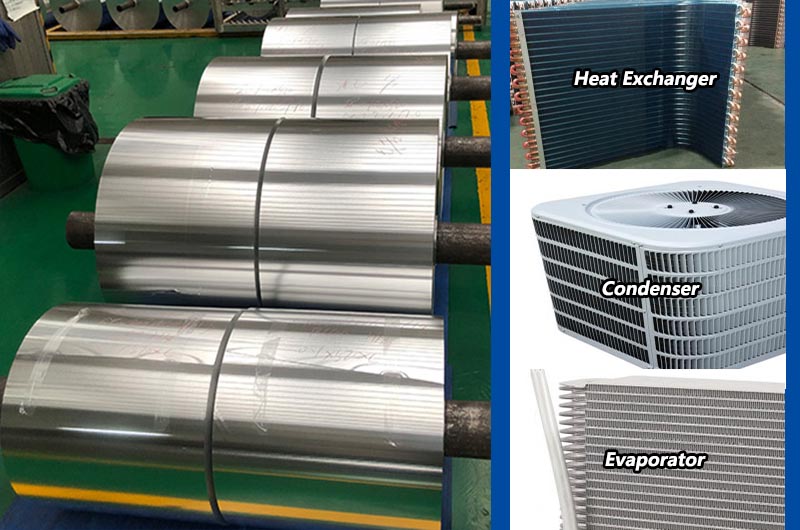
Hydrophilic aluminum foil is the main raw material for household air-conditioning heat exchangers and will not cause water droplets to accumulate and affect heat transfer. Since there are no water droplets, the noise caused by vibration is also reduced accordingly; it prevents air conditioning powder from blowing into the room and causing adverse effects on the human body, which complies with environmental protection requirements. Hydrophilic aluminum foil for air conditioners should comply with YS/T95.2-2001.
Production Process of Hydrophilic Aluminum Foil
Plain foil, cleaning, coating (hydrophilic layer, anti-corrosion layer), segmentation, finished hydrophilic foil
Hydrophilic foil is the main raw material for heat exchange fins in air conditioners. Widely used in refrigeration equipment such as household air conditioners, refrigerators, and automobile air conditioners.
The production of hydrophilic aluminum foil involves several key steps:
- Aluminum Coil Preparation: High-quality aluminum coils, often of alloys like 8011, are prepared for the coating process.
- Surface Treatment: The aluminum coil undergoes a surface treatment process to create a hydrophilic layer. This treatment can involve chemical processes that modify the surface properties of the aluminum.
- Coating Application: The hydrophilic coating is applied to the aluminum surface. This coating is designed to enhance wettability, resist corrosion, prevent mildew growth, and offer other desired properties.
- Drying and Curing: The coated aluminum is subjected to a drying and curing process to ensure the adhesion and durability of the hydrophilic layer.
- Quality Control: The finished hydrophilic aluminum foil undergoes quality control checks to ensure it meets the specified standards and requirements for the intended application.
- Rolling and Cutting: The coated aluminum foil is rolled into coils or sheets and cut to the required dimensions for further use in specific applications.
Structure of hydrophilic aluminum foil
Hydrophilic aluminum foil is a special type of aluminum foil that has been treated to have a hydrophilic (water-absorbent) surface. This treatment is commonly used in air conditioning and refrigeration systems, especially in the construction of heat exchanger fins. The hydrophilic surface helps improve heat transfer efficiency by promoting the condensation of moisture on the fin surface. Here is a brief introduction to the structure of hydrophilic aluminum foil:
- Base material aluminum foil: The core material is standard aluminum foil. Usually made of high-quality pure aluminum, rolled into thin sheets.
- Hydrophilic Coating: Hydrophilic properties are achieved by applying a specialized coating to one or both sides of the aluminum foil.
- Surface treatment: Hydrophilic coatings are usually applied through a chemical or electrochemical process to make them more attractive to water molecules.
- Microstructure: Hydrophilic treatment changes the surface of the aluminum foil, reducing its contact angle with water droplets. This means that the water droplets spread and form a film on the surface, rather than beading up.
Hydrophilic aluminum foil storage
- Dry environment: Store hydrophilic aluminum foil in a dry environment with low humidity. Moisture can affect the hydrophilic properties of the foil and cause degradation.
- Temperature Control: Keep storage area temperatures stable. Extreme temperatures can affect the structural integrity and performance of foils.
- Protect from contaminants: Keep hydrophilic foil away from dust, dirt, and other contaminants that may affect its surface or hydrophilic coating.
Hydrophilic aluminum foil represents a significant advancement in material science, addressing the need for moisture management in various industries. Its properties make it an invaluable choice for applications ranging from air conditioning systems to medical packaging and electronics manufacturing.
As technology continues to advance, the role of hydrophilic aluminum foil is likely to expand, contributing to more efficient and durable products across diverse industries.



